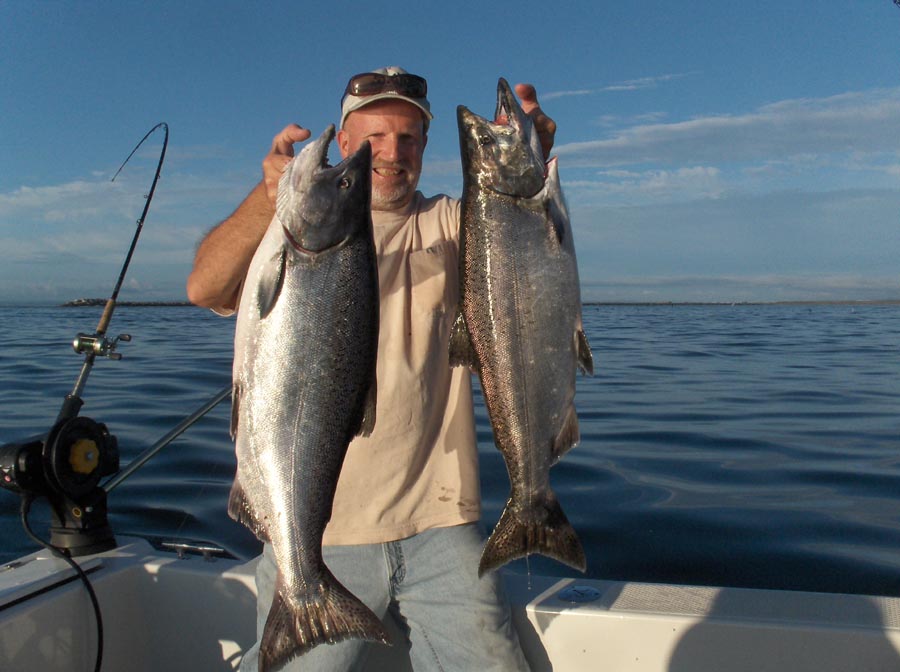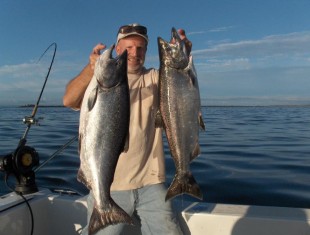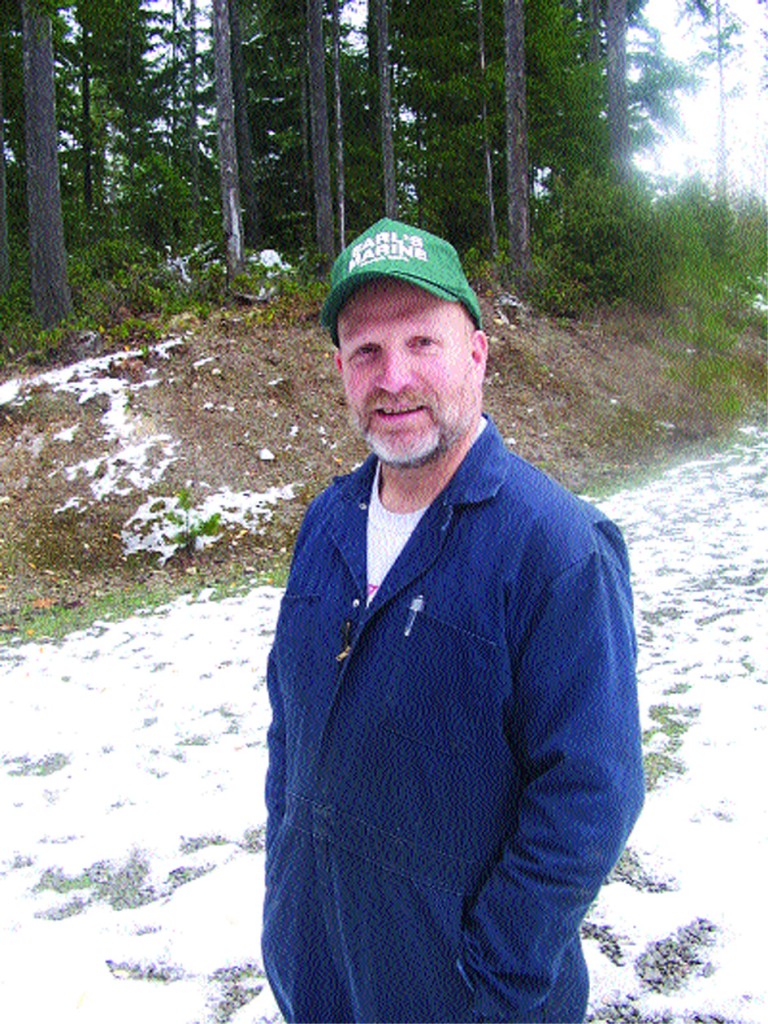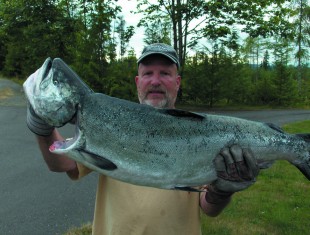
EARL SANDE
By Earl Sande
The history of how good salmon fishing was in Puget Sound can easily be forgotten in one or two generations. Few books were written about local salmon fishing during the 1930s, 1940s and 1950s when Seattle was considered one of the best places on earth to fish for salmon.
Enos Bradner was the outdoor editor for the Seattle Times from 1943, when he was 50 years old, until 1970 when he retired. He compiled a book—-The Inside on the Outdoors—–published in 1973 by Superior Publishing. It contains some of his favorite columns written over the years. Reading this book makes one want to jump on a time machine and go back to when salmon was king!
One of Bradner’s first interviews, in 1943, was with an 86-year old avid sport fisherman by the name of J.D. Loman. This guy came to Seattle in 1878 when its population was only 3,000. He fished every chance he could, mainly in rivers and streams. He did fish saltwater on occasion, but there were so many salmon and they were so easy to catch that he said it wasn’t much of a sport.
“Once he went out on a good size boat with an inboard motor off the north end of Whidbey Island,” Bradner wrote of Loman. “There were five men in the boat and they fished four or five hours on an incoming tide, casting out a Tacoma Bait, a sort of revolving spoon.
“And they caught 225 salmon in that time. During part of the period only three were fishing while the other two cut up and salted down the salmon.”
How’s that for a day’s fishing on the Sound compared to the present times!
Around 1913, B.L. Delong and J.W. Lothrop were some of the few steelhead fishermen before there was any daily limit or season. Only eight or nine guys fished for steelhead out of Seattle back then and it was common to hook 20 or more fish per day on the Stilly, Green, and Skykomish or White rivers.
About 1929, a few Seattle salmon fishermen started trolling wooden plugs made back east. They worked so well that local companies started making them with different designs and colors.
Trolling spoons were also popular and by the late 1940s the new lighter fishing gear with nylon line made mooching with herring possible. Cutting the perfect spinner off the side of a large herring with all the correct angles and hooking it up with two sharp hooks like my grandfather Cecil Baldwin did was a thing of beauty and very effective.
King salmon fishing in Elliott Bay was pretty good during the third week of August 1944. A few of the fish checked that week included a 38-pounder along with kings weighing 40, 46 and 51 pounds.
But the really big kings were caught trolling plugs or spoons off Hope Island near La Conner from 1945 to 1965 during the days when huge kings were common in the Skagit River.
From 1951 to 1964 twelve kings weighing 60 pounds or more were boated near Hope Island, topped by Mrs. Howard Little’s 70-pounder caught there in 1954. This was the largest king officially weighed in state waters until Chet Gausta boated his 70 and a half pound king at Sekiu in 1964.
Kings weighing 100 pounds were harvested in the early 1800s, but of course they were never officially weighed.
Catching big kings around Hope Island tapered off after 1965, but big fish were still being caught at Neah Bay and Sekiu.
The lower Skagit River was still putting out some nice fish in 1966 when nine kings were taken there weighing from 50 to 64 pounds.
Some other big fish caught in Washington waters were Homer Scott’s 33-pound steelhead caught in the Snake River in 1962, and in 1971, five steelhead weighing more than 30 pounds were caught in state rivers, including Albert English’s 30-pound, two-ounce fish caught from the Skagit River and Clifford Ames’s 32-pound two-ounce steelhead from the Cowlitz.
About 20 years ago, State biologists found a spawned out male Chinook weighing about 90 pounds on the Bogachiel River.
The big time Seattle sport fishing days were from 1935 to 1955, during which fishing techniques went from hand-lining with lots of lead to mooching with light gear.
Bradner also wrote: “As salmon fishing declined in Seattle waters so did the boat rental business. In the 1950s, the heyday of salmon fishing here, well over 1,000 fishing boats plied the two Seattle harbors on weekends. Then there were 16 boat houses serving Seattle waters.
For the record, the boat houses at Elliott Bay were Ernie’s, Lloyd’s, Harry’s, Healy’s, Harbor Island, Scotty’s, and West Seattle.
Ballard was served by Ballard, Baranoff’s, Carrol’s, Gene’s, Oli’s, Ray’s, Reed’s, and Salmon Bay.
Lloyd retired in 1966 and today there are no boat houses left at Elliott. At Ballard, only Gene’s and Ray’s are still operating.”
So, it seems nothing stays the same very long. No matter how good we think the fishing is, it’s really relative to what we are used to. I can only hope that 20 years from now we aren’t saying, “You should have seen how great the fishing was back in the year 2016”!
Now the future of our salmon fishing industry has turned cloudy. There are groups of people that would like to shut down all salmon hatcheries in Washington State thinking this would save wild salmon.
Without hatcheries there would be no commercial or sport fishing or tribal fishing for that matter.
A group called Wild Salmon Conservancy currently has pending law suits in the works against 69 salmon and steelhead hatcheries in our state.
Some fish biologists believe that even if we spent a trillion dollars trying to save wild salmon there will be no wild salmon a 100 years from now south of British Columbia.
Our elected officials better get a handle on these nuts before our billion dollar fishing industry goes up in smoke.



